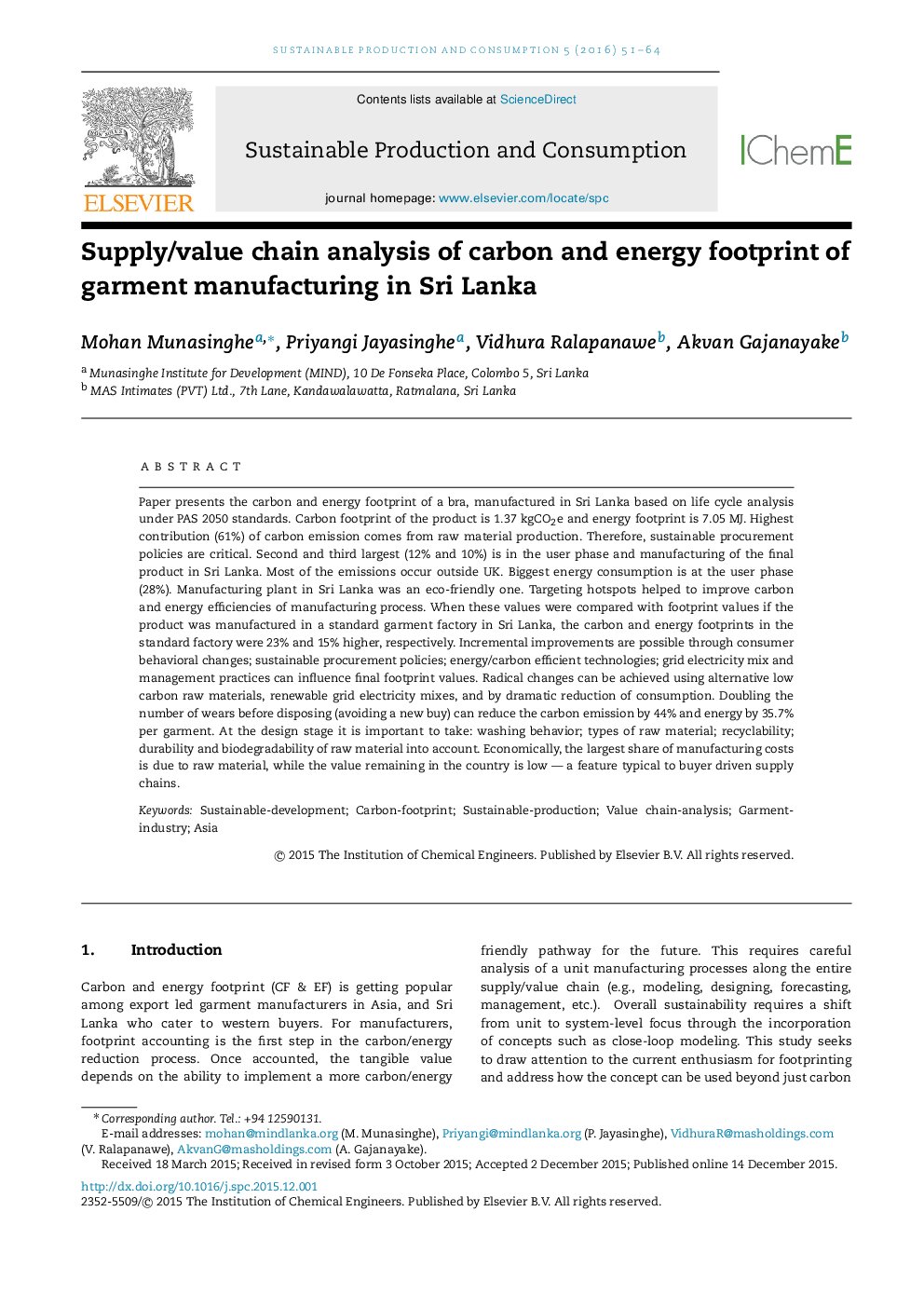| Article ID | Journal | Published Year | Pages | File Type |
|---|---|---|---|---|
| 694286 | Sustainable Production and Consumption | 2016 | 14 Pages |
•Life cycle assessment, based on PAS2050, of bra made in Sri Lanka retailed in UK.•Carbon emissions, 1.37 kgCO2e (30× bra weight) occurs mostly outside Sri Lanka & UK.•Main CO2 emitters: Raw material (61%), users (11.7%) and manufacturing (10.2%).•Energy footprint: 7.05 MJ per product; highest is in the user phase: 28%.•Low temperature washing, less washes, longer usage, green technology reduce both.
Paper presents the carbon and energy footprint of a bra, manufactured in Sri Lanka based on life cycle analysis under PAS 2050 standards. Carbon footprint of the product is 1.37 kgCO2e and energy footprint is 7.05 MJ. Highest contribution (61%) of carbon emission comes from raw material production. Therefore, sustainable procurement policies are critical. Second and third largest (12% and 10%) is in the user phase and manufacturing of the final product in Sri Lanka. Most of the emissions occur outside UK. Biggest energy consumption is at the user phase (28%). Manufacturing plant in Sri Lanka was an eco-friendly one. Targeting hotspots helped to improve carbon and energy efficiencies of manufacturing process. When these values were compared with footprint values if the product was manufactured in a standard garment factory in Sri Lanka, the carbon and energy footprints in the standard factory were 23% and 15% higher, respectively. Incremental improvements are possible through consumer behavioral changes; sustainable procurement policies; energy/carbon efficient technologies; grid electricity mix and management practices can influence final footprint values. Radical changes can be achieved using alternative low carbon raw materials, renewable grid electricity mixes, and by dramatic reduction of consumption. Doubling the number of wears before disposing (avoiding a new buy) can reduce the carbon emission by 44% and energy by 35.7% per garment. At the design stage it is important to take: washing behavior; types of raw material; recyclability; durability and biodegradability of raw material into account. Economically, the largest share of manufacturing costs is due to raw material, while the value remaining in the country is low — a feature typical to buyer driven supply chains.
Graphical abstractFigure optionsDownload full-size imageDownload as PowerPoint slide
